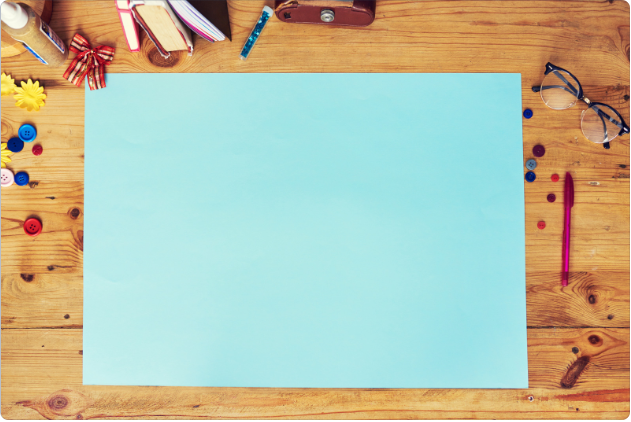Introducing children to lose parts of play can unlock a world of imagination, creativity, and endless possibilities.
Loose parts are open-ended materials that can be used in multiple ways, encouraging children to explore, experiment, and problem-solve.
From nature-inspired play to construction zones and sensory exploration, here are some great Loose Parts Play Ideas for Kids that will spark their curiosity and foster holistic development.
Each idea provides a unique experience, allowing children to engage their senses, refine their fine motor skills, and develop cognitive abilities while having loads of fun.
Nature-inspired Loose Parts Play:
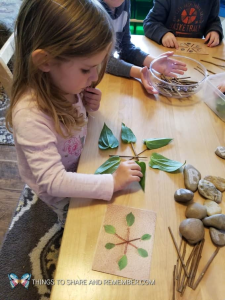
Encourage children to explore the wonders of nature by setting up a loose parts play area filled with natural materials. Provide a variety of items such as pinecones, seashells, leaves, and rocks. Children can use their imagination to create natural art, build structures, or design imaginative play scenes. This activity promotes creativity, sensory exploration, and an appreciation for the beauty of the natural world.
Construction Zone Loose Parts Play:
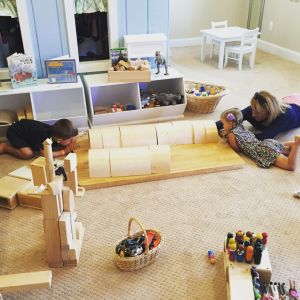
Transform a designated area into a construction zone where children can engage in hands-on building and engineering activities. Offer a range of loose parts like wooden blocks, PVC pipes, nuts, bolts, and cardboard boxes. Kids can construct elaborate structures, invent new designs, and experiment with cause-and-effect relationships. This open-ended play promotes problem-solving skills, spatial awareness, and fine motor development.
Related: 20 Playful Syllable Activities for Preschool
Water Play with Loose Parts:
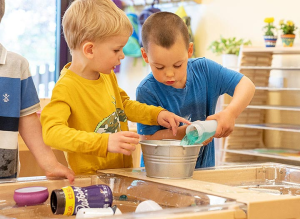
Combine the joy of water play with loose parts by creating a water-themed play area. Fill a large basin or water table with water and add loose parts such as funnels, sponges, cups, and water wheels. Children can explore concepts like buoyancy, flow, and volume while engaging in sensory and imaginative play. This activity provides opportunities for scientific discovery, fine motor skill refinement, and cooperative play.
Artistic Expression with Loose Parts:
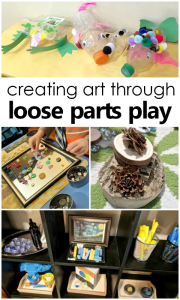
Encourage children to unleash their creativity by offering loose parts for artistic exploration. Provide a variety of materials such as buttons, ribbons, fabric scraps, beads, and paper shapes. Children can create collages, sculptures, or mixed-media masterpieces using these open-ended materials. This activity nurtures self-expression, and fine motor skills, and fosters an appreciation for the process of creating art.
Related: 20 Exciting Smell Activities for Preschoolers
Sensory Garden Loose Parts Play:
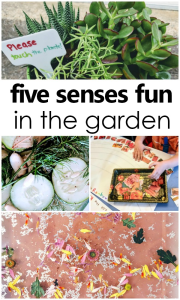
Set up a sensory garden play area where children can engage their senses through exploration and play. Include loose parts such as scented flowers, herbs, textured fabrics, wind chimes, and sensory balls. Children can experience different textures, smells, and sounds while engaging in imaginative play. This activity promotes sensory development, cognitive exploration, and a connection to the natural world.
Musical Instrument Creation:
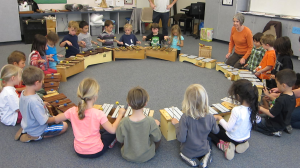
Create a music-inspired loose parts play area where children can experiment with sound and rhythm. Provide loose parts such as empty containers, rubber bands, bells, and sticks. Children can use these materials to construct their own musical instruments and explore different sounds and melodies. This activity promotes creativity, fine motor skills, and an appreciation for music.
Sensory Bin Exploration:
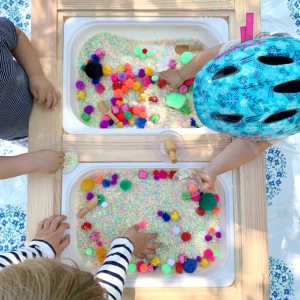
Set up a sensory bin filled with various loose parts to stimulate tactile exploration and sensory development. Include materials like rice, beans, pom-poms, feathers, and textured fabrics. Children can use their hands to scoop, pour, and manipulate the loose parts, engaging their senses and enhancing their fine motor skills. This activity encourages sensory integration, imaginative play, and cognitive development.
Science and Discovery Center:
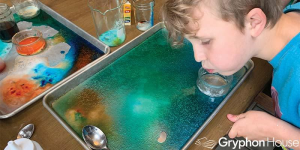
Create a science-themed loose parts play area to inspire children’s curiosity and exploration. Offer loose parts such as magnets, magnifying glasses, test tubes, and natural materials like leaves and rocks. Children can conduct experiments, make observations, and engage in hands-on scientific discovery. This activity fosters critical thinking, problem-solving skills, and a love for science.
Storytelling and Puppetry:

Foster literacy skills and imaginative play by providing loose parts for storytelling and puppetry. Include items such as felt pieces, craft sticks, fabric scraps, and googly eyes. Children can create their own puppets, props, and story scenes using loose parts and engage in imaginative storytelling. This activity promotes language development, creativity, and social-emotional skills.
Outdoor Adventure Loose Parts Play:

Take the loose parts to play outdoors and create an adventure-themed play area. Offer loose parts such as ropes, tarps, buckets, and tree stumps. Children can build forts, create obstacle courses, or design their own outdoor games using loose parts. This activity encourages physical activity, teamwork, and problem-solving skills while fostering a love for nature and the great outdoors.
Fairy Garden Creation:
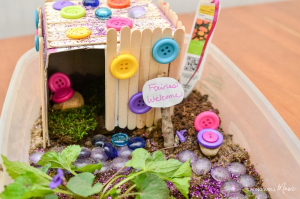
Create a magical loose parts play area where children can design and build their own fairy gardens. Provide loose parts such as miniature figurines, natural materials like pebbles and moss, small containers, and craft supplies. Children can use their creativity to construct tiny landscapes, decorate with loose parts, and engage in imaginative play. This activity nurtures storytelling skills, fine motor development, and a sense of wonder.
Sensory Playdough Station:
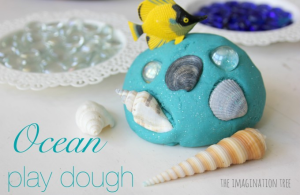
Set up a sensory playdough station with various loose parts to enhance the tactile experience. Offer different colors of playdough and lose parts such as beads, buttons, pasta, seashells, and small toys. Children can manipulate the playdough, press loose parts into it, and create unique textures and designs. This activity promotes sensory exploration, fine motor skills, and creativity.
Loose Parts Sorting and Counting:
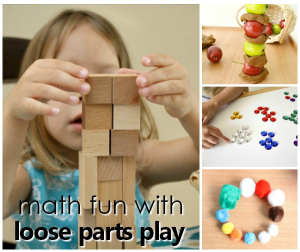
Foster mathematical skills by providing loose parts for sorting and counting activities. Offer loose parts such as buttons, beads, pom-poms, and small toys in different colors and shapes. Children can sort and classify loose parts based on different attributes, create patterns, and practice counting and simple math operations. This activity enhances cognitive skills, mathematical thinking, and problem-solving abilities.
Junkyard Art Creation:

Encourage recycling and creativity by creating a loose parts play area using recycled materials. Provide loose parts such as cardboard boxes, bottle caps, plastic bottles, fabric scraps, and old CDs. Children can use these materials to build sculptures, create mixed-media artwork, or invent their own imaginative creations. This activity promotes environmental awareness, problem-solving skills, and artistic expression.
Loose Parts Sensory Path:
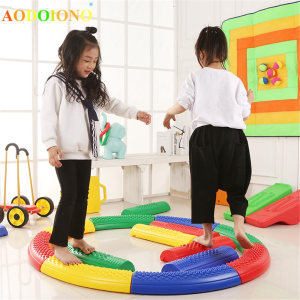
Create a sensory path using loose parts to promote movement, balance, and sensory integration. Offer loose parts such as stepping stones, balance beams, cones, and textured mats. Children can navigate the path, stepping on different surfaces, practicing balance, and engaging their senses. This activity supports gross motor development, coordination, and sensory integration.
Kitchen and Cooking Play:
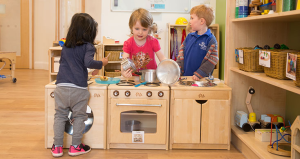
Set up a loose parts play area inspired by a kitchen and cooking theme. Provide loose parts such as play food, utensils, bowls, pots, and pans. Children can engage in pretend cooking, create recipes, and serve imaginary meals. This activity promotes imaginative play, social skills, and language development as children engage in role-playing and storytelling.
Transportation and Vehicle Construction:
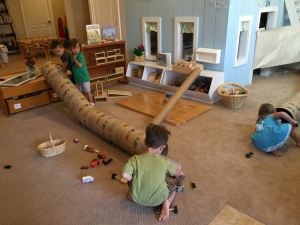
Create a loose parts play area centered around transportation and vehicle construction. Offer loose parts such as wooden blocks, toy cars, cardboard tubes, and bottle caps. Children can build their own vehicles, construct roadways, and engage in imaginative play as they transport their creations. This activity encourages fine motor skills, spatial awareness, and imaginative thinking.
Sensory Bin with Water Beads:
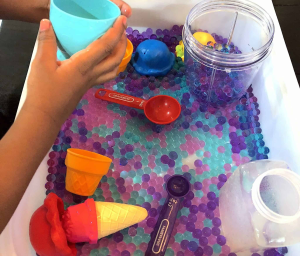
Fill a sensory bin with water beads and provide loose parts such as spoons, cups, and small containers. Children can explore the sensory properties of the water beads, scoop them, and transfer them between containers. This activity promotes fine motor skills, sensory exploration, and tactile development. Ensure adult supervision, especially with younger children, to prevent ingestion.
Loose Parts Puzzle Play:
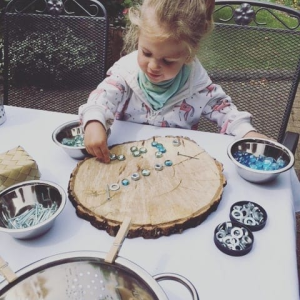
Offer a variety of loose parts that can be assembled and connected to create puzzles. Provide materials such as interlocking blocks, nuts, bolts, and puzzle pieces. Children can engage in problem-solving as they manipulate the loose parts to create complete structures or fit pieces together. This activity fosters cognitive skills, spatial reasoning, and critical thinking.
Loose Parts Outdoor Art Gallery:
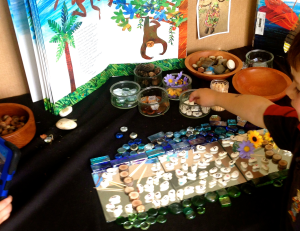
Transform outdoor space into an art gallery using loose parts. Provide loose parts such as paintbrushes, sponges, natural materials, and outdoor-friendly art supplies. Children can create their own outdoor artwork on easels, trees, or fences using the loose parts. This activity promotes artistic expression, creativity, and a connection to the natural environment.

